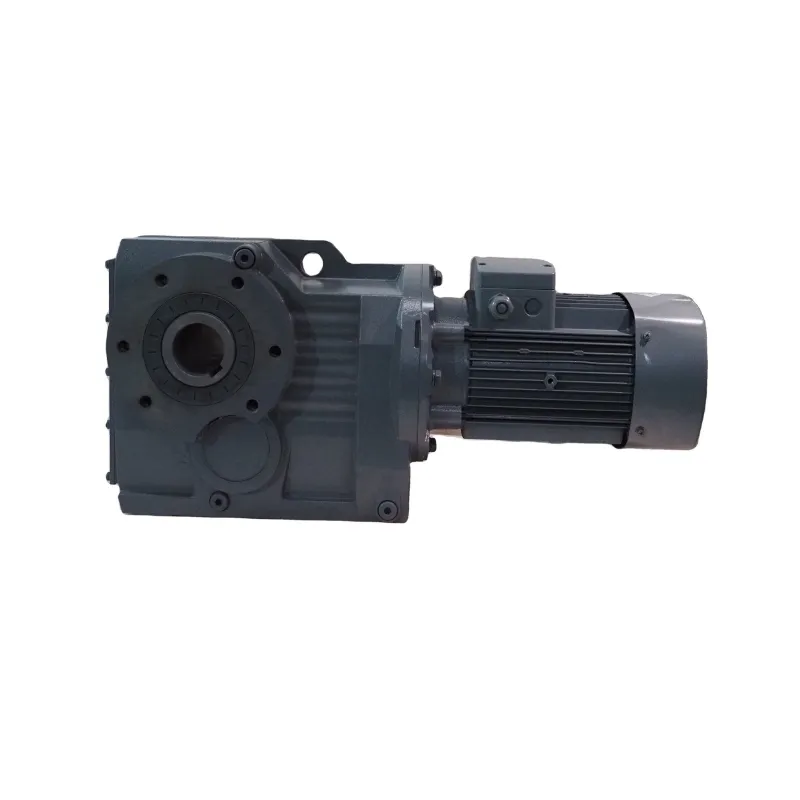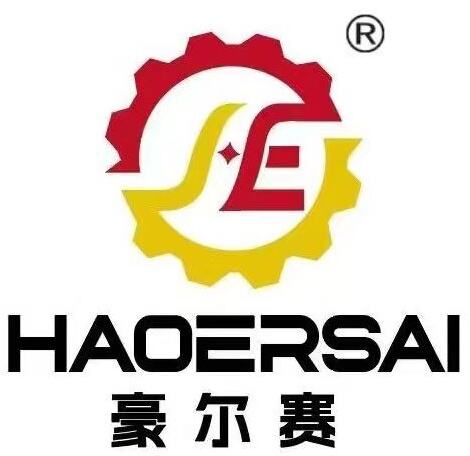Understanding Gear Reduction Box Mechanics
How Gear Reduction Boxes Manage Torque and Speed
Gear reduction boxes play a key role in controlling torque and speed since they reduce output speed but boost torque at the same time. These devices work by having the input gear spin faster than what comes out the other end, so we get slower movement but way more power behind it. The actual numbers can vary quite a bit depending on how the box was built, usually somewhere between 2 to 1 all the way up past 100 to 1 ratio. When these boxes manage torque and speed properly, machines run better overall. Companies actually save money because they don't need super powerful motors anymore just to get the job done right. This makes operations cheaper to run and keeps everything running smoothly day after day without breakdowns.
Internal Components: Gears, Bearings, and Load Distribution
Inside a gear reduction box we find several key parts working together: gears, bearings, and a sturdy housing that keeps everything lined up so it runs without problems. There are different kinds of gears too - think spur gears for straightforward power transfer, helical ones that run quieter, and bevel gears when direction changes are needed. These variations give engineers options depending on what the application requires. The bearings inside do important work reducing friction between moving parts. Most modern bearings are made from special alloys designed to handle serious stress and heat over time. When loads get distributed evenly across all those spinning parts, the whole system lasts much longer. Many manufacturers report their gearboxes lasting decades with proper maintenance, something that translates into real money saved on replacements while keeping operations running reliably day after day.
Key Advantages of Gear Reduction Boxes Over Direct Drive
Torque Multiplication for Heavy Loads
Gear reduction boxes offer a major benefit when it comes to multiplying torque, so heavy loads can actually be moved using much smaller motors than would otherwise be needed. This feature becomes really important for things like cranes and industrial hoists, where moving massive weights directly affects what kind of machinery needs to be designed. Research shows that machines equipped with gear reduction systems can handle loads several times heavier compared to standard direct drive setups without these reductions. The real value here lies in making machines work better while letting engineers specify smaller, less powerful motors. This means companies save money both on initial equipment costs and long term energy bills since they're not running huge motors all day every day.
Improved Efficiency in Variable Speed Applications
Reduction gearboxes really boost efficiency because they keep power flowing properly at different speeds, something that makes all the difference when dealing with variable speed situations. The way these boxes are built gives operators much better control over both speed and torque, cutting down on wasted energy while making machines run smoother overall. Industry reports show that in certain applications like conveyors and transport systems, gear reduction can actually increase efficiency somewhere around 30%. For manufacturers who need their equipment to perform consistently no matter what kind of load or speed changes come along, this matters a lot. Over time, companies start seeing those energy savings translate into real money saved too, which explains why so many industrial operations have made the switch to these systems.
Operational Longevity and Maintenance Benefits
Reduced Wear on Critical Components
Reduction gearboxes really help cut down on wear and tear for important parts, which means they last longer and need fewer replacements over time. These systems spread out the workload between different gears and bearings instead of letting one spot take all the strain, so there's less chance of something breaking down suddenly. Studies show that when kept up properly, gear reduction setups can actually cut wear by around half compared to systems without them. The big difference in wear makes a real impact on keeping equipment running smoothly while cutting back on those expensive repairs and unexpected shutdowns, making operations run better overall.
Extended Service Intervals Compared to Direct Drive Systems
Gear reduction boxes have another major benefit that many manufacturers overlook: they last much longer between required maintenance than standard direct drive setups. The way these systems handle heavy loads means machines need servicing far less often. For most industrial operations, this results in significantly less downtime and better day-to-day efficiency across the board. According to recent data from manufacturing associations, facilities that switched to gear reduction technology saw maintenance issues drop by around 30% on average. Fewer breakdowns mean production lines stay running smoothly through busy periods. And let's face it, nobody wants to deal with equipment failures during peak demand times. The savings from reduced maintenance costs alone can be substantial over time while ensuring critical machinery stays operational exactly when businesses need it most.

Applications Where Gear Reduction Boxes Excel
Wind Turbines: Balancing Power and Durability
The gear reduction box plays a key role in wind turbines by converting the mechanical energy generated by those spinning blades into usable electricity. These boxes handle all sorts of torque fluctuations and speed changes when the wind picks up or dies down, plus they protect internal parts from sand, salt air, and other nasty weather stuff. A recent report from Renewable Energy Insights found that today's wind farms with these gearboxes actually convert about 25 percent more energy compared to older direct drive models. That kind of efficiency matters a lot for countries trying to cut greenhouse gases. Most wind farm operators will tell anyone who asks that good quality gear reduction units mean the difference between consistent power generation and costly downtime, especially in places where the wind just doesn't behave.
Industrial Machinery: Precision and Reliability
Gear reduction boxes play a critical role in industrial environments when it comes to managing both speed and torque throughout various types of machinery. From CNC machines to conveyor belts, these devices help maintain control over mechanical forces. What's really important is how they manage torque so precisely, which boosts overall productivity and cuts down on breakdowns caused by mechanical stress. According to reports from manufacturing facilities across different sectors, implementing proper gear reduction systems typically results in around 15 to 25 percent improvements in production output. For factories that need consistent results day after day, reliable operation matters most. That's why many manufacturers continue investing in quality gear reduction solutions despite the initial costs, knowing they'll get better long term performance and fewer unexpected shutdowns.
Cost-Effectiveness Over Time
Lower Lifetime Costs Despite Higher Initial Investment
Gear reduction boxes look expensive when we first see the price tag, but most businesses find them cheaper in the long run. Sure, they cost more upfront compared to direct drive options, but what these boxes save on maintenance and day-to-day running expenses adds up fast. The way they're built actually protects components from getting worn out so quickly, which means less downtime for fixes or part replacements. Over time, this translates into real money saved. Some industry reports show companies cutting down their operating expenses anywhere between 20% to 30% across the life of their equipment simply by going with gear reduction tech instead of cheaper alternatives. For manufacturers looking to keep costs under control without sacrificing quality, this kind of investment pays off handsomely after just a few years of operation.
Energy Savings and Reduced Downtime
Gear reduction boxes really cut down on energy usage, letting motors run more efficiently while consuming less power overall. When motors work smarter instead of harder, companies see their electricity bills drop quite a bit. Another big plus is how durable these systems tend to be. Because they're built tough, there aren't as many breakdowns happening, which means machines keep running without interruption. For manufacturers, this kind of reliability translates into better production numbers and healthier bottom lines. According to various energy assessments across different industries, implementing gear reduction tech typically saves between 10% and 30% on energy costs, though exact figures depend on what equipment is being used. So when looking at long term benefits, gear reduction boxes deliver two main advantages at once cost reductions and fewer production stoppages.
FAQ
What is a gear reduction box?
A gear reduction box is a mechanical device that reduces output speed while increasing torque, used in applications requiring high force and efficiency.
How do gear reduction boxes manage torque and speed?
They use a system where the input gear spins faster than the output gear, lowering speed and increasing torque, allowing for different torque ratios.
What are the advantages of gear reduction over direct drive?
Gear reduction boxes multiply torque, allowing heavy loads to be moved with smaller motors and improving efficiency in variable speed applications.
Are gear reduction boxes cost-effective?
Yes, despite higher initial costs, gear reduction boxes prove more economical over time due to reduced maintenance needs and energy savings.

